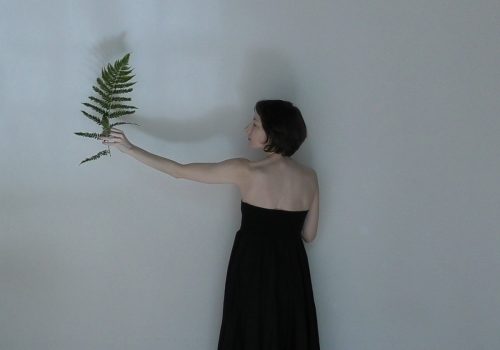“The forest breathed, more ample now, awakened, alert, its remotest hiding places suddenly stirred by the enigmatic signs of time’s reversion – an age of great hunts, of proud cavalcades – as if the old Merovingian lair were quickened by a forgotten scent in the air that made it live again”.
“[…] the horizon of the woods was darkening with a purple shadow … the very earth turned an evil yellowish complexion, that was that was working on her like a slow fever: you walked on her as on a corpse that beginning to stink. “
Julien Gracq, A balcony in the forest, 1958
That winter the century-old umbrella pines of the Villa Medici felled. A brutal and unifying sign, the majestic and historic crowns of these extinct trees cast their melancholy, inspiring and tutelary shadow on the 2019 edition of ¡Viva Villa!
The figure of the tree emerges, haunting the imaginary and the current thought as the remanence of a world about to disappear. This ecological and political thought is alive in many of the works of the artists of the three prestigious artistic residences – Villa Medici, Casa de Velázquez and Villa Kujoyama.
The silhouette of the filmed tree, its carved trunk suspended on a stage, commodified bamboo forests as something threatened in the era of the anthropocene, a classified flora, from the invasion of eucalyptus forests to the herbal and symbolic virtue of garlic or that of indigo. From the deforested landscape emptied of its villages whose poetic indecision hesitates between present and announced collapse, scenes of dystopias of a world all shaken, it seems that everyone develops in his/her discipline – video, painting, writing, theater, dance, performance, sculpture, engraving, architecture, music, craft and design, cinema … – ecological and poetic imaginations marked by this threatened “plant life” (Emanuele Coccia).
Linked to history, to a powerful cultural history, many try to think about the way this link with the past subsists, irrigates our present: are thus evoked the Battle of San Romano by Paolo Uccello and his forest of spears, the antecedents of an ecological thought with the figures of Joseph Beuys (Defense of Nature, 1977) or Robert Smithson visiting Rome, the notion of collapse according to Aby Warburg (Infinite Healing) between the ego and the world, the organic approach of Buñuel, the materialism of Millares and Tapiès, the animistic hybridization of the Dogon culture and the use of the smartphone, the spiritism of an Edison announcing a digital beyond, the erasure according to Maurice Blanchot, Claude Régy or Louis-René des Forêts, the Japanese Gutaï actuation and the notion of gift, the phenomenon of irradiation, that of butoh dance …
The exhibition offers a path in six chapters that allows us to first glimpse the projections of a future, between collapses and heterotopias, then the various descriptions of our present Anthropocene around a coherent set of herbarium, developing ecological imaginaries and a reflection on organic and corporal time under the image of the memory of elephants, finally the question of the link to the past is posed through resurgent vestiges and images and anamorphoses or hybridizations.
A program of music, films, theater and dance mixes movements, images, texts and sounds to this art wandering art.
Cécile Debray, Curator
* Title borrowed from a choreographic piece by Benjamin Bertrand, resident of Villa Kujoyama 2019
















